What's the Difference Between Espresso and Coffee?
What sets coffee and espresso apart? Is it the beans? The grind? The brewing method? We take a closer look.
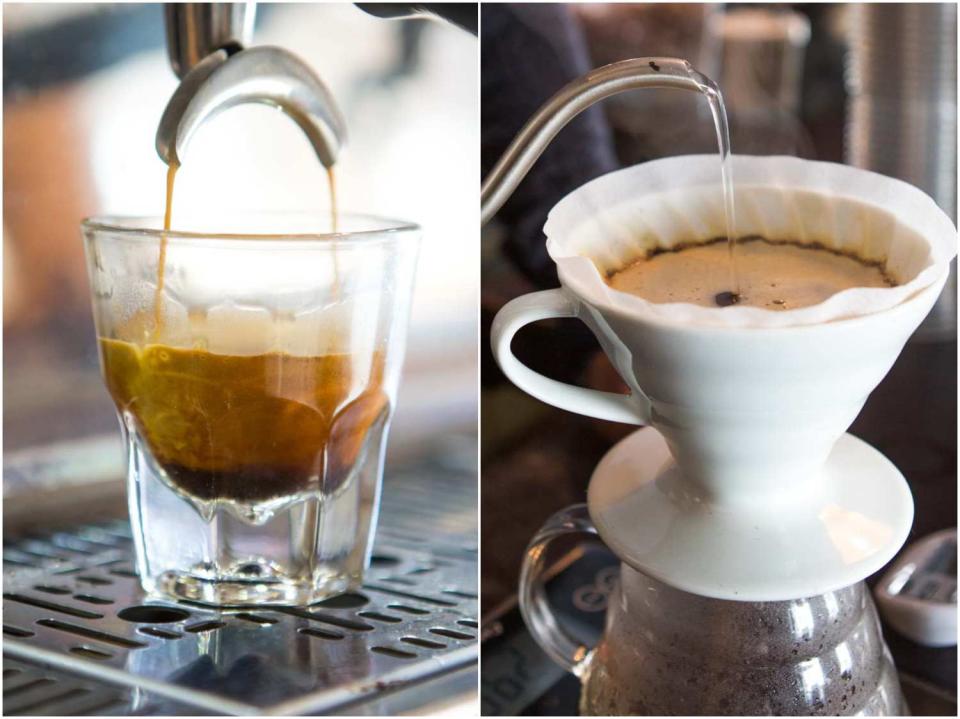
Serious Eats / Vicky Wasik
Would a rose by any other name smell as sweet? Would espresso still be espresso if we didn't call it that? And how is espresso different from coffee, anyway? That last one is a simple question that we've seen asked enough to convince us to answer it. So, here goes.
The Quick Answer
Espresso and coffee are not different things. Espresso is a type of coffee. More specifically, it's a method of brewing coffee that uses high water pressure and finely ground beans to make a small, concentrated shot (the term also refers to the shot itself). While darkly roasted beans have historically been more popular in Italy, where espresso was invented, any kind of coffee bean from any origin and at any roast level can be used to make espresso. One of espresso's defining characteristics, aside from its concentrated flavor and more syrupy body, is a top layer of foam known as the crema, which is a by-product of the high-pressure extraction process. Espresso can be combined with milk (or additional water) to make other espresso-based drinks, such as a macchiato, cortado, cappuccino, latte, flat white, marocchino, americano, and more.
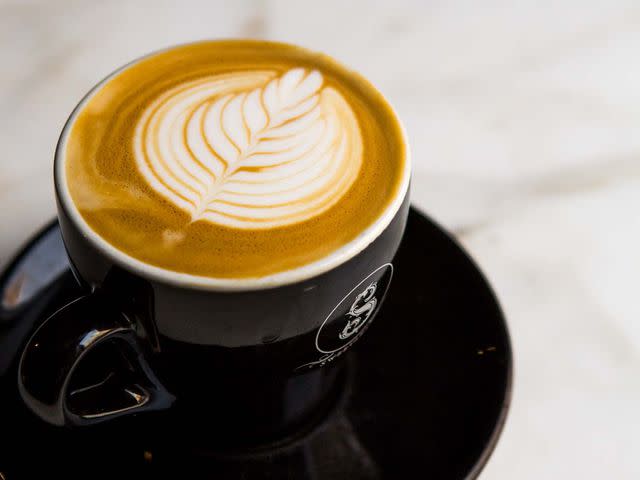
Serious Eats / Vicky Wasik
The Slightly Longer Answer
Walk into any coffee bar in Italy and ask for an "espresso," and you'll receive just what you were hoping for—a small, strong shot of coffee with a layer of crema on top. Thing is, you didn't need to say "espresso," and frankly, a native Italian rarely ever does. The magic words for this particular drink are, simply, un caffè, "a coffee." (If you're being polite—and why shouldn't you be?—you can tack a per favore onto the end of that.) In the same way that you probably don't walk into your local American diner and ask Alice, Flo, or Vera for a "large-batch drip coffee," an Italian in Italy rarely feels the need to be specific about the brewing method when ordering a coffee: It's understood that espresso is the default coffee there.

Serious Eats / Vicky Wasik
This little lesson on how to order an espresso in Italy is also the answer to the question in the headline of this article. What's the difference between espresso and coffee? There is none! Espresso is coffee!
But espresso is just one method of brewing coffee among many, from pourover to French press and siphon brewers.
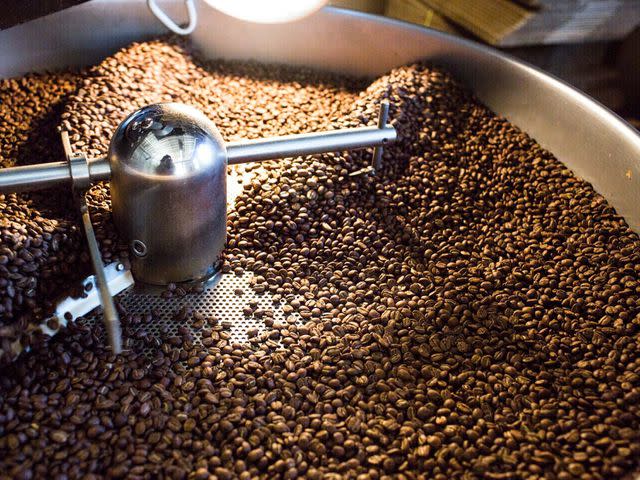
Serious Eats / Vicky Wasik
Coffee is the agricultural product from which brewed coffee of any sort, including espresso, is made. Coffee beans themselves are really seeds from the berry of the coffee plant. The production process is complicated, and there's more than one way to do it, but in short, the fruit of the berry is stripped away, the seeds are fermented, and they're eventually roasted and brewed into coffee.
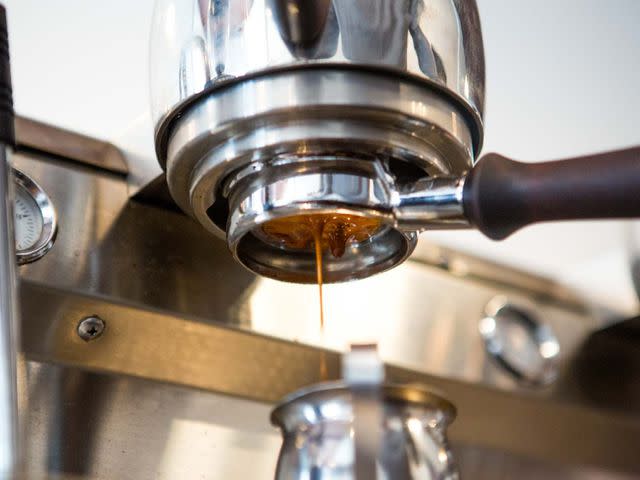
Serious Eats / Vicky Wasik
Brewing coffee is the process of extracting some of the soluble components of the beans into water. Which we then drink. Because otherwise we can't function. There are many ways to do this, though. The simplest are methods like those used for Turkish coffee and cowboy coffee, both of which call for boiling ground coffee in water in a process technically known as decoction. Espresso is one of the most complex of coffee-brewing methods, requiring some serious gear and know-how to get good results. Espresso brewing is categorically not decoction.
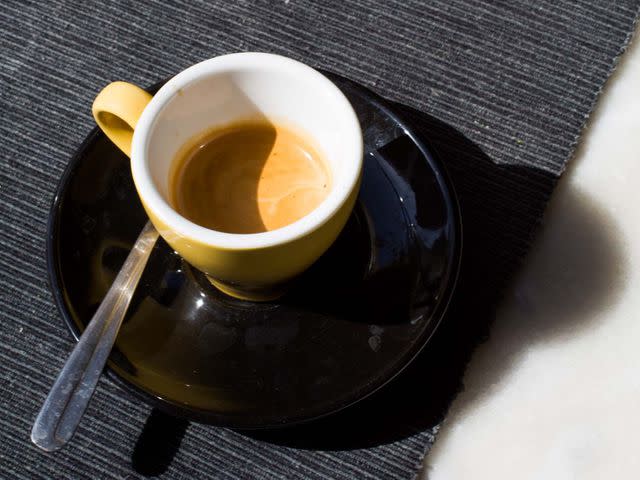
Serious Eats / Vicky Wasik
The process, in a nutshell (or, should I say, in a demitasse?), involves forcing hot water through a puck of finely ground coffee at high pressure. In the early days of espresso machines—around the turn of the 20th century—steam power alone was used to move hot water through the ground coffee, but the results were often acrid and bitter. The process and machinery were refined over subsequent decades, culminating around 1940 with Achille Gaggia's innovation of adding a hand-operated pump to help pressurize the water, eliminating the need to rely on steam pressure alone. This hand pump is how we've come to talk about "pulling a shot" today, though most modern espresso machines have replaced manual pumps with automated ones. Baristas today do plenty of dosing, grinding, tamping, and brewing, but pulling...not so much.
There's a lot more one could write about the intricacies of brewing espresso—and you can read about our favorite home espresso machines right here—but I'll leave the rest for another article. I'm not even going to wade into the debate about whether "expresso" is an acceptable alternative pronunciation. But I will leave you with one more Italian coffee tip: The next time you do go into a coffee bar in Italy and ask for "un caffè" (knowing full well an espresso will arrive presently), remember that there are almost always two prices. For the people standing at the bar, there's a lower price, which is regulated by local authorities (and has been since 1911). The other is for folks who want to sit down, and that one can be several times as much. I always choose to stand. After all, it's an espresso—the idea isn't really to linger.
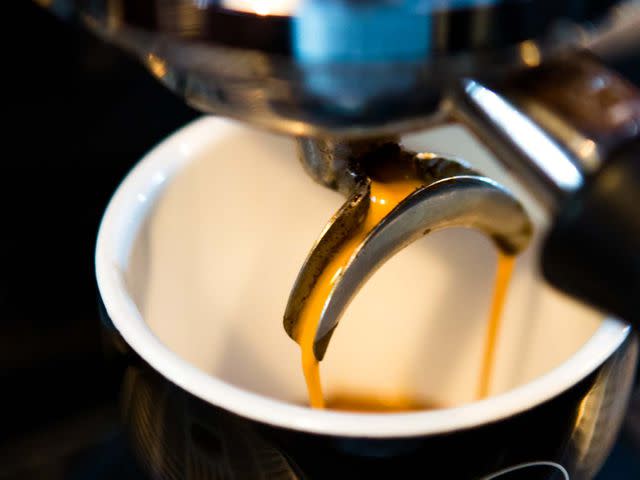
Serious Eats / Vicky Wasik